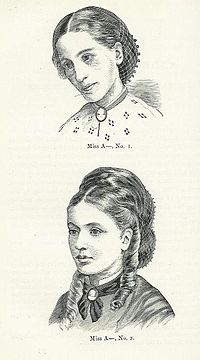
Photo from wikipedia
To understand our patients and optimize their treatment, psychotherapists of all theoretical orientations may benefit from considering current scientific evidence alongside psychodynamic constructs. There is recent neuroscientific evidence that subjective… Click to show full abstract
To understand our patients and optimize their treatment, psychotherapists of all theoretical orientations may benefit from considering current scientific evidence alongside psychodynamic constructs. There is recent neuroscientific evidence that subjective awareness, feelings and emotions depend upon “interoception,” defined as the neural signaling to the brain from all tissues of the body. Interoception is the obvious basis of homeostasis (in the brainstem) but some interoceptive signals rise above this level and contribute to inferential processes that substantiate intrapersonal and interpersonal experience. The focus of this paper is on the essential role that their “interoception” plays in our patients’ emotional experience and subjective awareness, and how the process referred to as “mentalizing interoception” may be harnessed in therapy. This can best be understood in terms of “predictive processing,” which describes how subjective states, and particularly emotion, are inferred from sensory inputs – both interoceptive and exteroceptive. Predictive processing assumes that the brain infers (probabilistically) the likely cause of sensation experienced through the sense organs, by testing this sensory data against its innate and learned “priors.” This implies that any effort at changing heavily over-learned prior beliefs will require action upon the system that has generated that set of prior beliefs. This involves, quite literally, acting upon the world to alter inferential processes, or in the case of interoceptive priors, acting on the patient’s body to alter habitual autonomic nervous system (ANS) reflexes. Focused attention to bodily sensations/reactions, in the safety of the therapeutic relationship, provides a route to “mentalizing interoception,” by means of the bodily cues that may be the only conscious element of deeply hidden priors and thus the clearest way to access them. This can: update patients’ characteristic, dysfunctional responses to emotion and feelings; increase emotional insight; decrease cognitive distortions; and engender a more acute awareness of the present moment. These important ideas are outlined below from the perspective of psychodynamic psychotherapeutic practice, in order to discuss how relevant information from neuroscientific theory and current research can best be applied in clinical treatment. A clinical case will be presented to illustrate how this argument or treatment relates directly to clinical practice.
Journal Title: Frontiers in Psychology
Year Published: 2019
Link to full text (if available)
Share on Social Media: Sign Up to like & get
recommendations!